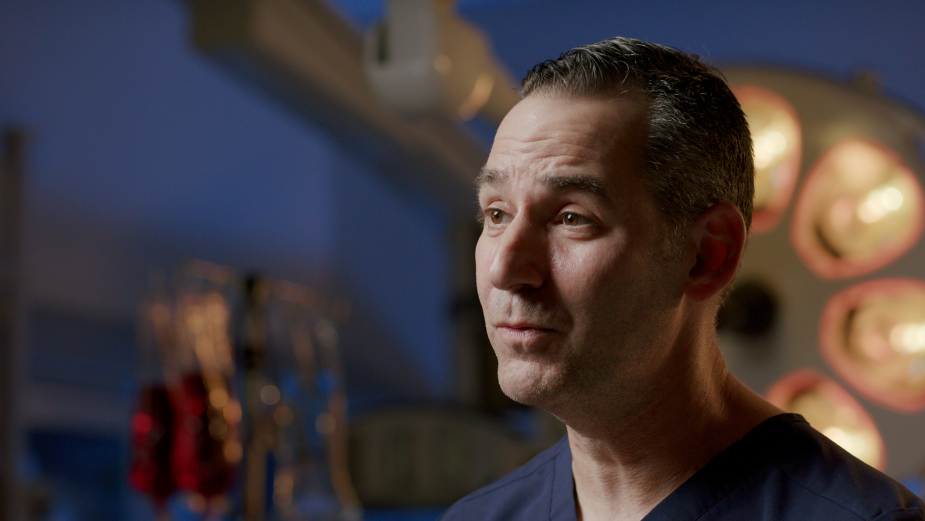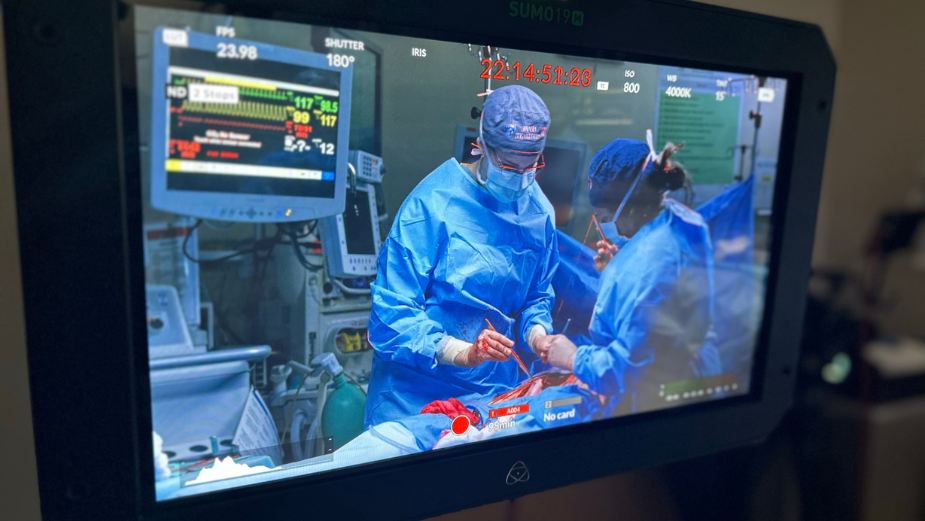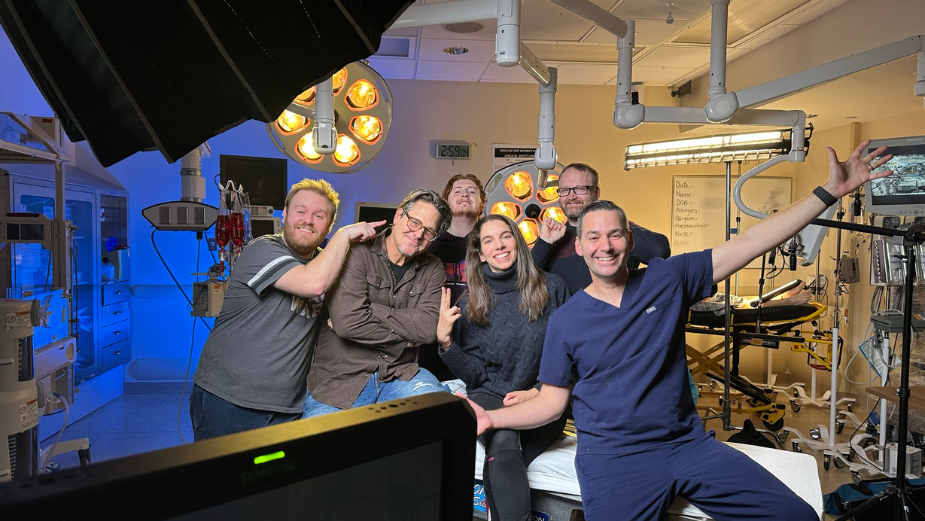
The Power of Video Libraries: “Anyone With a Phone Can Save a Life”

It has been over a year since Ukraine was invaded by Russia. The Office of the High Commissioner for Human Rights (OHCHR) estimates the number of civilian war casualties to be over 13,000, with a further 8,300 people having lost their lives. As the rampant violence continues, the conflict has left millions of Ukrainians feeling vulnerable and helpless. These dire circumstances highlight the need for increased trauma care, inspiring an idea in Dr Eric Goralnick, associate professor of emergency medicine at Harvard Medical School, to equip civilians with the critical skills needed to provide emergent care. With the help of the Harvard Humanitarian Initiative (HHI), the International Medical Corps and a coalition of experts, Goralnick began to ideate the most effective way to empower individuals with these life saving tools. The solution? A viral video series.
Video is king – and YouTube is its kingdom. Despite the booming popularity of shareable short form video content on Instagram and TikTok, YouTube is still the most popular video-sharing platform, with over 2.6 billion users worldwide. In 2023, the Content Marketing Institute reported that video content was the most popular area of investment, and further research found that 92% of video content gave marketers a positive ROI, with 96% of videos helping to increase user understanding of their product or service. Video was precisely the right domain for this worthy cause.
Boston-based full service video content production company, ELEMENT, understood the ‘Save a Life’ series was a special project which deserved their creative, reliable and resourceful attentiveness. Partnering up with Ukrainian healthcare leaders, International Medical Corps (IMC), the Harvard Humanitarian Initiative (HHI), Mass General Brigham (MGB), Boston Children’s Hospital (BCH), the Global Medical Knowledge Alliance (GMKA) and the Clinton Global Initiative, the award winning creative team was able to bring the doctor’s vision to life. ELEMENT director, Tom Foley, worked closely with Goralnick to produce a library of 26 videos, each containing crucial instructions on how to save lives in various emergency situations; covering everything from paediatric trauma, to burn care, to chest compression.
In this interview with Eric Goralnick, Tom Foley and the ELEMENT support team - Mike Nolan, associate post producer; Kristen Kearns, executive producer; Eran Lobel, executive producer - LBB discovered how ELEMENT utilised their filmmaking expertise to craft this salvational video library.
LBB> Eric, what was your key objective for this video content?
Eric> My guiding principle always was the idea that almost anyone with a cell phone, given the right video instruction at the right moment, can save a life. And that informed everything we did.
LBB> Tom, what direction and creative insight did Eric provide?
Tom> Eric told me at the outset: “I believe anyone with a cell phone can save a life” and that became our overarching principle and collective undertaking. Eric is one of the foremost experts in trauma medicine. His time serving in the Military overseas and running one of the top ER’s in the country put us in incredible hands for this project. I focused on what he, and his respective experts, wanted to convey and interpreted it visually, while captaining my crew. We all wanted to give everything possible we could to create scenes and images in service of this mission to save lives.
LBB> How did you work together to ensure the appropriate lifesaving information was communicated most effectively?
Eric> Tom and I were very much on the same page from the beginning. We both agreed that accuracy and clear communication were key, but we both wanted to elevate these videos, make them compelling, so they would resonate with the audience. Tom was instrumental at every stage of the process, from script-writing to developing visuals, to directing the scenes and giving direction in the edit.
Tom> Eric and I worked together for almost six months, which as someone who primarily does commercials, is highly unusual. After our first creative meetings and shoot, we were fully aligned. It felt more like we were filming a feature, in the sense that our crew (and Eric and his amazing team) became kind of a “family” on the set. There is a creative “looseness” that comes with familiarity, and when we were doing extremely difficult films (like how to handle a mass casualty event or paediatric trauma) it made it bearable.

LBB> Tom, how did you ensure Eric’s creative vision for ‘Save a Life’ was fully realised?
Tom> Every script went through the same creative process. Top experts in a particular field would write an initial script, and then our combined team would rewrite together on hours-long Zoom calls. Eric and Lea Sinno, one of his amazing team members, were particularly instrumental in getting the critical wording right. My goal was to help bring the visual approach to life, while prioritising accuracy – there’s no room for ambiguity when what you’re communicating can literally be the difference between life and death for someone watching.
LBB> ‘Save a Life’ has received two million views in as many weeks – why do you think the video library has been so successful?
Eric> It’s multiple factors… the content, the timing and the quality.
Tom> Well, these films couldn’t be more important and timely for the people in critical need of them – and that’s the bottom line. But I’ll add that Eric and I were aligned in believing that creating a sense of dynamic energy and realism would make these films more relatable – less likely that someone would turn them off. So that helped, I’m sure.
Eran> As Eric and Tom have both mentioned, it was the perfect intersection of the content, timing, and execution.
LBB> How does this project compare to other video series you have directed in the past? Have you worked on anything similar before?
Tom> This project was entirely new to me – I’ve spent my career directing (and often writing) TV commercials and content films. My focus has been on both comedy and heartfelt documentary storytelling. This was a new journey for me.
LBB> Did you encounter any major challenges or obstacles during production? If so, how did you overcome them?
Tom> Well, there was the added complexity that what we were filming was going to be in Ukrainian. And this also meant we had to think about both practical and cultural nuances when creating a scene. There was a key moment when our on-camera Ukrainian talent – an amazing Doctor – couldn’t commit to the role simply because she was in the field, saving lives. We had a Ukrainian producer, who had been helping me interface with Ukrainian talent, step up and become our narrator. It was an amazing moment when we tested her and realised how good she was.
Eran> It was an extremely ambitious and complicated project overall. The important nature of getting everything right from a medical perspective along with translating it into Ukrainian. I give big credit to Eric and Tom for seamlessly managing their teams and the whole process.

LBB> How did the ELEMENT team employ creative thinking and problem solving to produce these videos?
Eran> When we had our first meeting with Eric, we realised how important and far-reaching these videos had the potential to be. Kristen and I thought Tom would have the perfect balance of storytelling and ability to unpack complex material to deliver this ambitious series. And then our goal was to surround him with the best production and post support team .
LBB> It’s fair to say that this video library would qualify as a non-traditional project. Are there any complex production challenges that a project like this presents?
Kristen> This non-traditional video series involved a large number of stakeholders over a long period of time. There were communication barrier challenges, medical terms and cultural challenges. Tom did a great job communicating not only with Eric but also with our Ukrainian producer and with our entire production and post teams.
LBB> How did the process of collaborating with prestigious members of the medical field differ from your work commercial partners? What were the key differences?
Eran> We often work with celebrity talent, athletes and actors and believe that creating a fun, nurturing production environment allows the talent to deliver their best performances. This approach worked well for the doctors and helped Tom pull authentic performances from each of them.
LBB> What are you most proud of about the ‘Save a Life’ series?
Eric> The thing that gets me is how many great people came together to make this happen. So, I’d call it a collective pride – I’m extremely proud of this group.
Tom> It’s a rare privilege to come home at the end of the day and realise your efforts at work literally will save people’s lives. I felt this every moment of this project. And I will carry that with me.
Eran> ELEMENT has been in business for nearly 25 years, producing award-winning commercials, TV shows and films – some amazing work along the way and we are as proud of this life-saving initiative as anything we’ve ever done based on the real life human impact.

LBB> Eric, I understand that you have plans to make similar films for other countries in need of this type of information. What have you learnt from this project and how do you plan to bring this forward into future educational video projects?
Eric> We have learned a lot and we are in the process of studying the efficacy and usability of these videos. Beyond views and impressions, we need to understand if viewers perform the skills effectively using the videos and the impact of the individual who was cared for by the viewer. We are relentlessly committed to improving these and future videos to help save lives.













